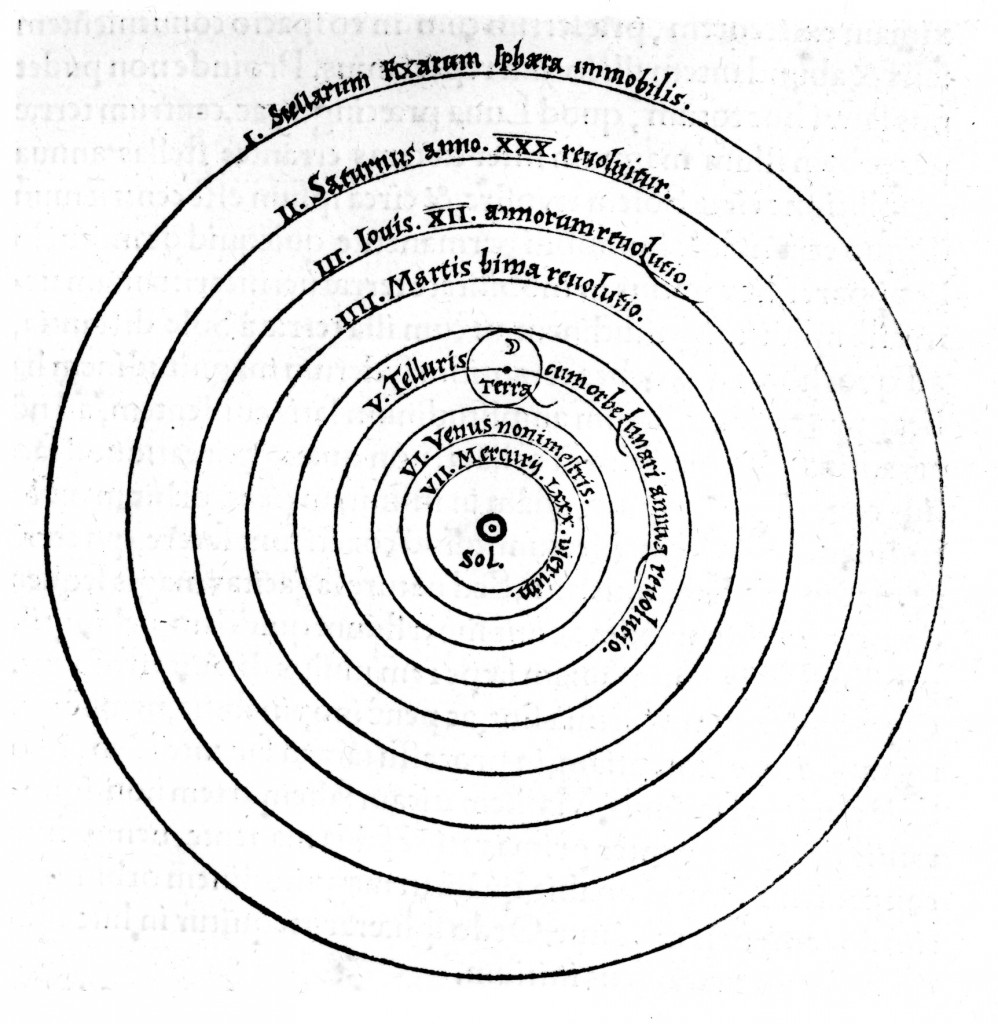 Type: instrument / book
Type: instrument / book
Inv. No. n/a
Source: Royal Astronomical Society
This is surely the most famous book in the history of astronomy, opened at its most famous page, where in a woodcut print Copernicus boldly places ‘Sol’, the sun, at the centre of the cosmos. History does not record the thoughts of the craftsman who cut the block in the Nuremberg print-shop of Johannes Petreius. How much did he grasp of the momentous implications of copying the circles for the orbs that Copernicus had drawn in manuscript, then adding the lettering in reverse for the central sun and the earth revolving with the moon? Did he mention at home that he has cut out the characters that, contrary to all appearance and received opinion, asserted that the starry heavens did not move: ‘Stellarum Fixarum Sphæra immobilis’?
According to Copernicus, the earth was a planet moving annually around a central sun and rotating daily as it moved. Although his cosmology was fundamentally different, he used much of the geometrical technique of Ptolemy. One feature Copernicus particularly valued, where he differed from Ptolemy, was that his astronomy allowed an observer to calculate the relative distances of all the planets from the central sun and this showed that their speeds decreased the further they were positioned from the sun. The stars, at the limit of the world, were stationary. This relationship bound the whole system together: the world was a true ‘cosmos’.
On loan from the Royal Astronomical Society
Previous: Peter Apian, Astronomicum Caesareum
Next: Georg Joachim Rheticus, Narratio prima

